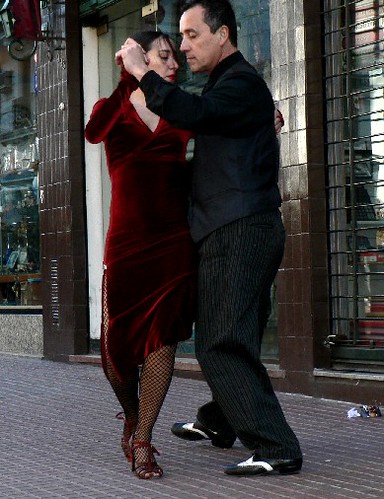 To clear out the issue with incorrectly entering Brazil, we decided to travel to Argentina next day. Another reason was that we wanted to do some mountain hiking in Argentina before the coldest winter days come. So we got ourselves on the next bus to Buenos Aires (Bs As). Luckily we didn’t have any trouble at all at the border, probably because of the young friendly officer who solved the issue by pretending we hadn’t even entered the country the day before. “With no entry stamp, I can’t give you an exit stamp” he said. We were happy.
To clear out the issue with incorrectly entering Brazil, we decided to travel to Argentina next day. Another reason was that we wanted to do some mountain hiking in Argentina before the coldest winter days come. So we got ourselves on the next bus to Buenos Aires (Bs As). Luckily we didn’t have any trouble at all at the border, probably because of the young friendly officer who solved the issue by pretending we hadn’t even entered the country the day before. “With no entry stamp, I can’t give you an exit stamp” he said. We were happy. The bus ride to Bs As took 15 hours, with many sleep disturbances. The police made the bus stop 5 times during the night to search for drugs, we believe. Once they even brought dogs to sniff around. The bus ticket included a meal, but they didn’t explain anything, but thanks to Polonas good nose we were the first in the restaurant. Two British passengers with limited Spanish knowledge almost missed the dinner.
The bus terminal in Buenos Aires happened to be the biggest anybody would imagine, with 99 gates that were more than half-full all the time. We arrived at 8 am wearing sandals and shorts, and noticed the outside temperature was 7° cold. Well inside the station building we added jackets and wind-pants, and went looking for tourist info. Soon we got “picked up” by a messenger for the local youth hostels, who convinced us with an offer with good location, price and dinners included.
After checking in we went downtown to find the Sunday arts & crafts market in San Telmo. Polona started feeling more “at home” from understanding the language, and memories from her Peru stay came back to mind. But compared to Peru, here are much fewer poor people visible – and it didn’t seem like police would have just “hid” them away. The 3 million habitants of Bs As, called Porteños, are in general very respectful – which is taken to its extreme when they queue for a popular bus line or in front of a bank. Several queues stretched a whole block. People are very happy and cheerful and always wait or walk around to not block the view when photographing. We felt like they treated us really well, sometimes even believing we were locals. Along the streets we saw people selling just anything, performing or even giving away free hugs – which is actually a quite famous international campaign. We also found some freezing tango dancers who danced for tips.
The second day was spent walking the recommended “to be seen” streets. Near the Congress we found a group of retired militaries protesting to free some prisoners from a war of Malvinas/Falklands islands. We saw them again while resting on Avenida 9 de Julio which is the biggest city street in the world. It has 22 lanes plus pedestrian space, in total 140 metres wide! It’s easy to orientate the well marked streets and once we passed a small street “Republica de Eslovenia” (Slovenian republic).
We liked the city because of colourful streets of La Boca, street art, its people and the small nice town Tigre. It lies just an hour north of the city centre in the middle of the river delta of Rio de la Plata. That is where we spent the last few hours before heading to the Andes!
 To clear out the issue with incorrectly entering
To clear out the issue with incorrectly entering 

